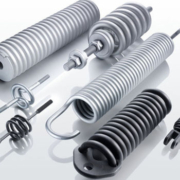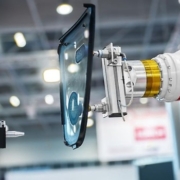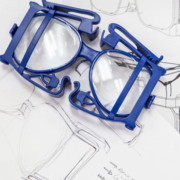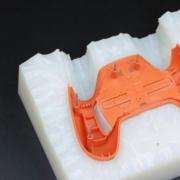Sheet Metal Manufacturing Is Essential For Many Industries
In rapid prototyping industry, When we are talking about metal prototype manufacturing .Might some of works will be also related with sheet metal .The Sheet Metal Manufacturing are elements that are used mainly for the construction industry, they are characterized by being metal sheets that have come to be known as sheet or plates, these sheets are manufactured with different thicknesses and sizes (gauges and lengths), they are also used for the manufacture of profiles.
Knowing the manufacturing process of sheet metal profiles and those who are able to manufacture them of excellent quality is really important, the pickling process, machining, cold rolling, galvanizing lines and the painting process must be taken into account to achieve the best possible results for an excellent quality product.
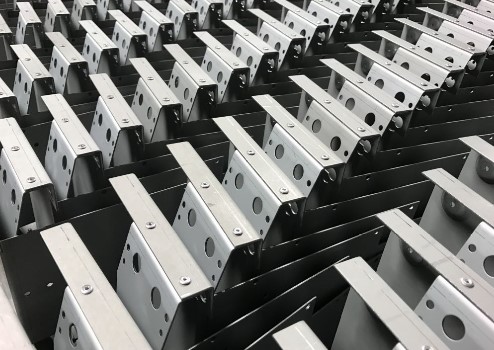
Manufacturing these profiles in sheets must take four processes which are:
- Pickling process
- Cold rolling mill
- Galvanizing line
- Painting process
-
PICKLING PROCESS
In the pickling process, it is possible to guarantee quality in the following production processes by means of a hydrochloric acid bath that permanently eliminates the iron oxide scales that are generated during the hot rolling process. In addition, the width of the roll and the surface quality are prepared to optimize the cold lamination process.
-
COLD ROLLING MILL
The cold rolling process allows the thickness, width, flatness and surface quality to be obtained free of defects and to be ready to carry out the galvanizing process at the time that is required by the clients.
-
GALVANIZED LINE
Galvanizing processes have everything necessary to deliver the best zinc or aluminum zinc coating. First, the calibration and the width of the roll are ensured, then cleaning baths are made with some chemicals and a brushing, then a preheating and annealing process is carried out in a vertical oven.
Then a hot-dip galvanizing process is carried out controlled by automatic air nozzles, which gives it flatness and perfect quality for highly demanding markets. Finally, it is treated with an acrylic passivized or electrostatic oiling according to the requirements for its transport, storage or a later process.
-
PAINTING PROCESS
Finally, the painting process is carried out if required, then a chemical treatment is carried out that prepares the surface to receive a layer of primer that is converted into an excellent base to anchor the finishing paint controlled by roller equipment that makes it uniform the coat of paint.
Range of sheet on the market
The importance of knowing the process lies in being able to distinguish the range of Sheet Metal Manufacturing that are currently on the market, since there are currently several manufacturers and many more maquiladoras, who do not always comply with the standards, thus producing lower grade sheet metal. An example of this is Lose, when it is manufactured in the plant, it has a structural grade steel unlike the maquiladoras that have access to a commercial grade steel, with which they manufacture the sheet metal parts.
When you know the production processes you can better understand what material you can use correctly in the different types of projects and know first-hand the quality of the manufacturers. Acquire this product from expert hands that have quality certificates, have a high brand positioning and have a price that is favorable for the correct implementation of your projects.
What is bending?
Sheet metal bending can be defined as the deformation of a material around a neutral axis. This deformation has as a final result several products, one of them essential for several industries: aluminum profiles. Given that these satisfy constructive and ornamental needs, these implements are of vital importance for the bodywork industry, especially in the cargo vehicle sector.
What is its importance for the body and cargo industry?
Aluminum sheets for car bodies must take special care regarding bending since, if the Sheet Metal Manufacturing is not adequately compressed during the operation, the deforming operation can be unsuccessful. The deformation must allow that, on the one hand, the sheet manufacturing is compressed and on the other, a stretching occurs that makes the sheet functional for the purposes that are pursued. This criterion is key for body profiles. Given that the radii of the sheet must allow not only to meet the customer’s specifications but also for the geometric complexities of the product to satisfy the quality indicators that exist in the processing industry. The bending of the car body sheets can be in V, executed in V or with a V die, as well as with a sliding die. This type of procedure is generally accompanied by punches that facilitate operation on both obtuse and acute angles of the sheet metal.
What are the advantages of bending?
A good profile cut fulfills several key functions for the body, for example: reducing weight and increasing the load capacity of the vehicle. Remember that another factor to take into account is the customization of the bending, which can follow indications in L, T, S, or the shape that you consider appropriate, as well as having standard alloy criteria 6060/6063 to 6005/6082 that respects the lengths from 3 to 7 meters, necessary for its implementation. Also regarding aluminum, it should be noted that it is 100 percent recyclable with respect to the recovery of the vehicle in the event of a collision.


